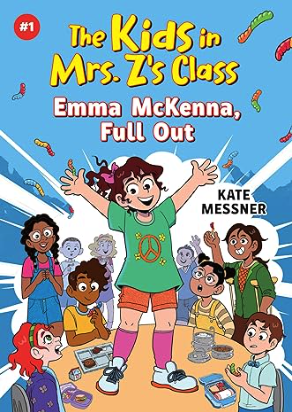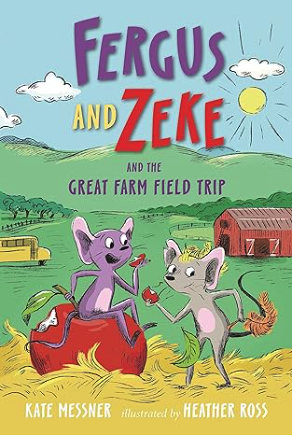How in the world did Bruce Coville get left out of my NE SCBWI conference photos? What an incredible speaker. I heard him at the World of Children’s Literature Conference in Lake Placid, NY six years ago and couldn’t wait to see him at SCBWI last weekend. He was funny and smart and worth every minute of waiting.
Author: hatfield13
NESCBWI Photo Album
Memories for those who were present – a vicarious trip to Nashua, NH for those who weren’t…
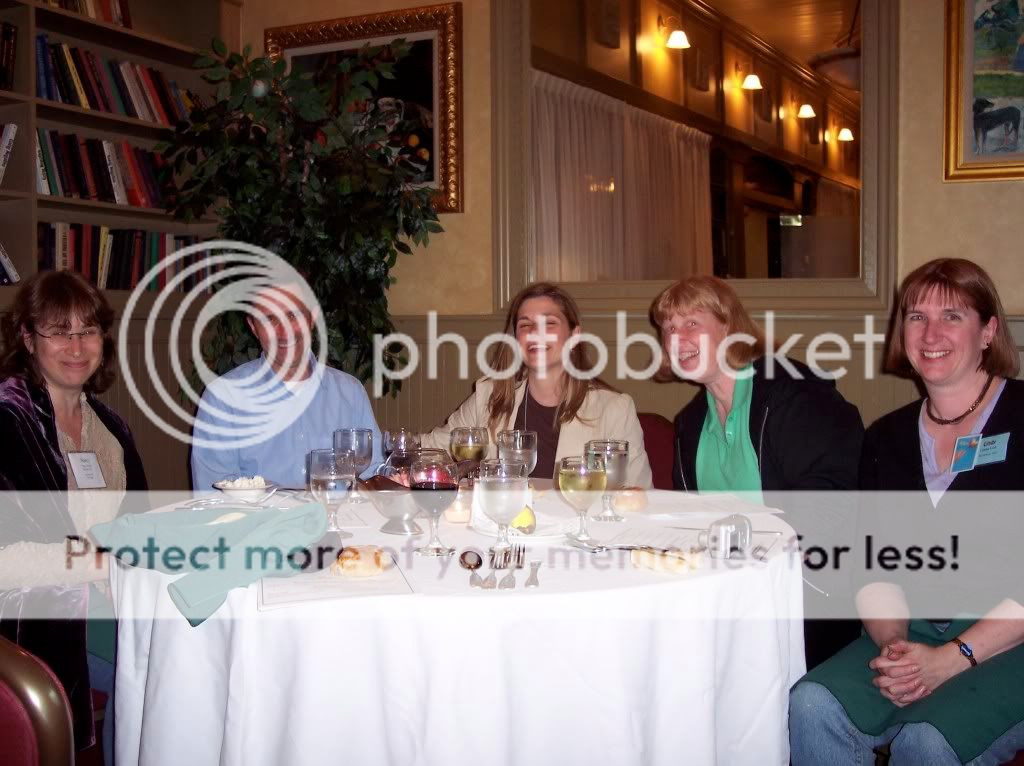
Friday supper company that made my son SO jealous… From left, Nancy Werlin, Peter and Jo Knowles
(
), Cindy Faughnan, and Cindy Lord (
) We had a terrific conversation about book covers and how they come to be, with PhotoShop, stock images, and chain store input. It was fascinating (and somewhat alarming for an author whose first title is coming out this fall, cover TBA!).
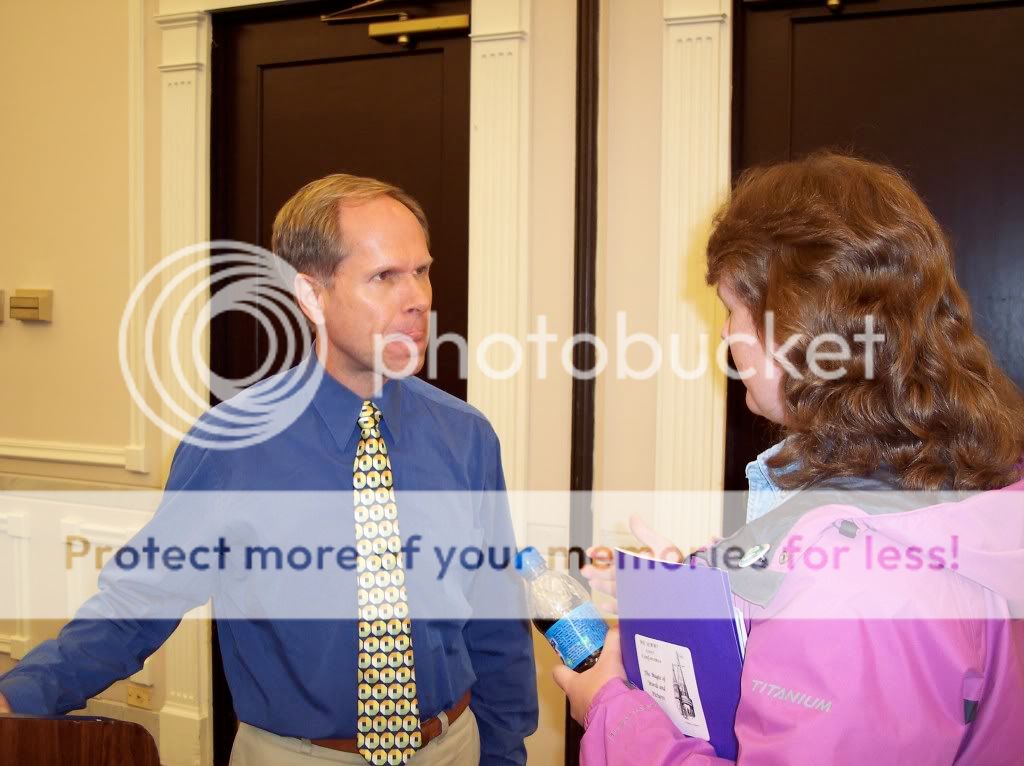

Stephen Fraser with the Jennifer DeChiara Literary Agency chats with a SCBWI conference goer.
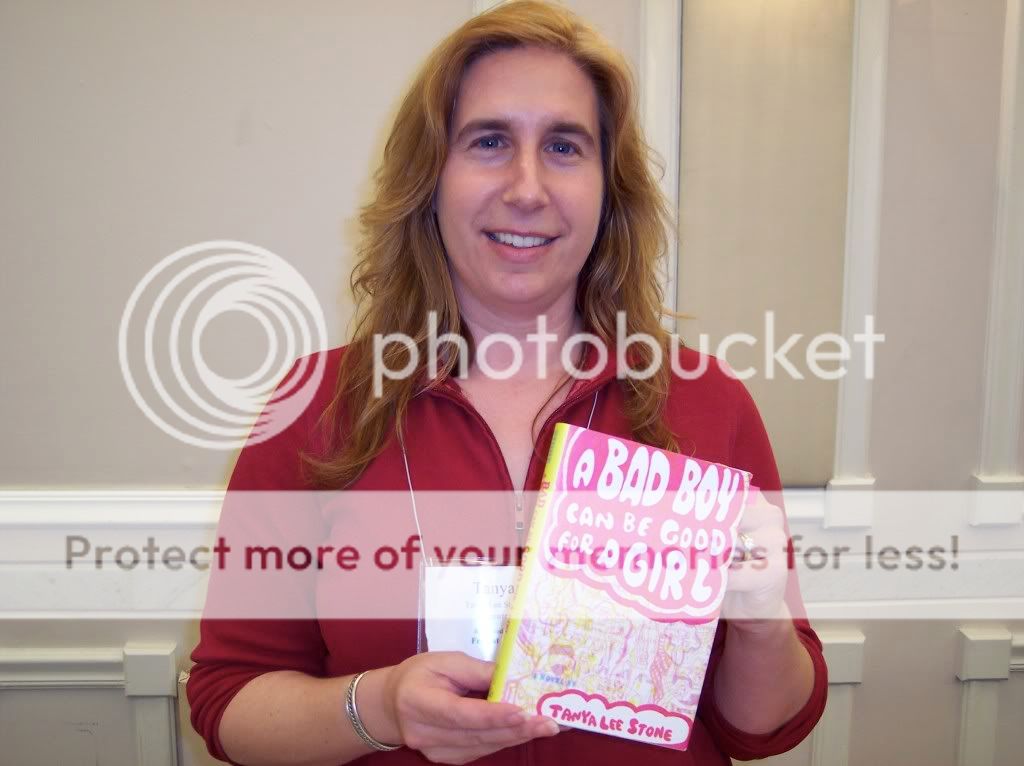

Tanya Lee Stone shows off her latest YA novel.
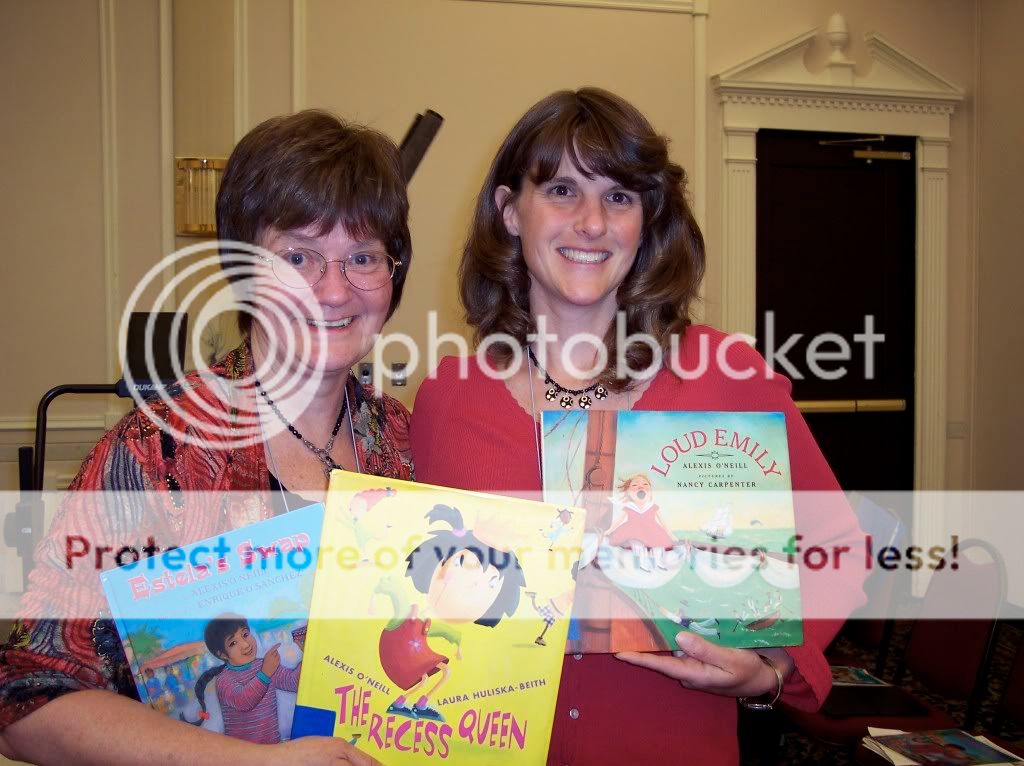

Alexis O’Neill (on the left… that’s me helping her hold books) gave a terrific and energetic program on
school visits. I’d love to be a kid at one of her presentations!
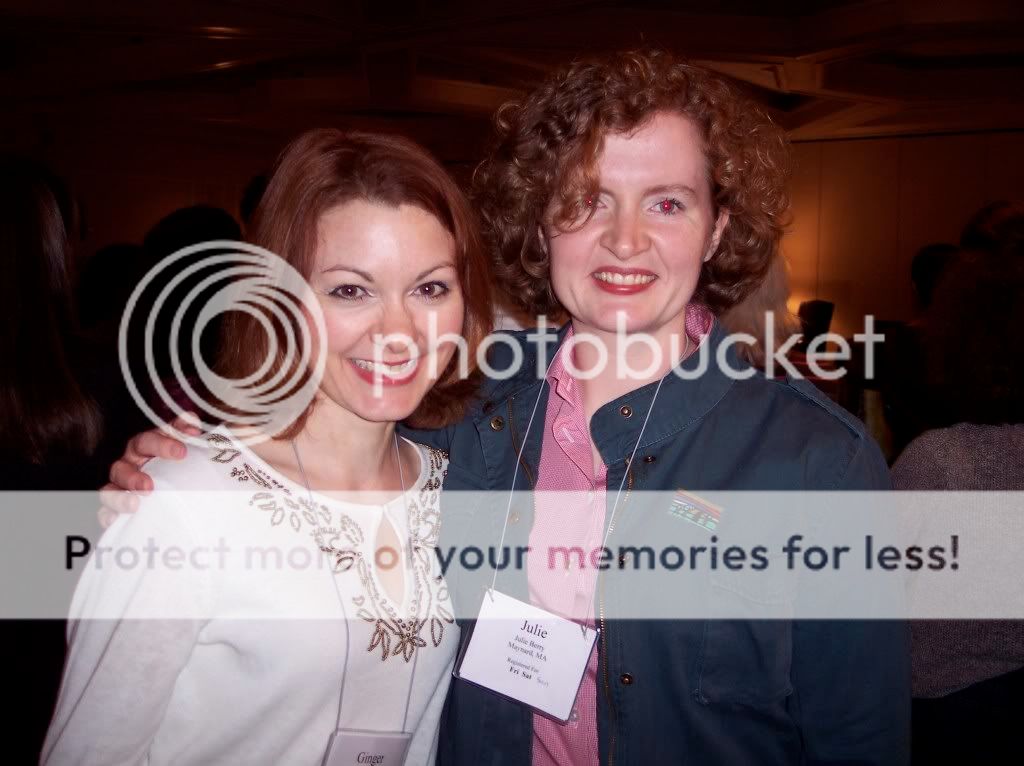

From the “you-never-know-who-you’ll-run-into” file…. Julie Berry, on the right, walked up to me at the conference to re-introduce herself. Her older sister Joanna Gardner, also a talented writer, was my best friend when we were kids. We lost touch after high school and reconnected just a few weeks ago when I found her website. Julie and her friend Ginger live and write in Massachusetts now, and Julie’s “first line” won terrific praise from the editors and agent who responded to it. (Conference attendees, remember the one that started with the girl in the willow tree, saying “You didn’t come…”) Way to go, Julie! And way to go, Joanna, whose poetry is getting well-deserved attention. She was a great writer in 7th grade, too…
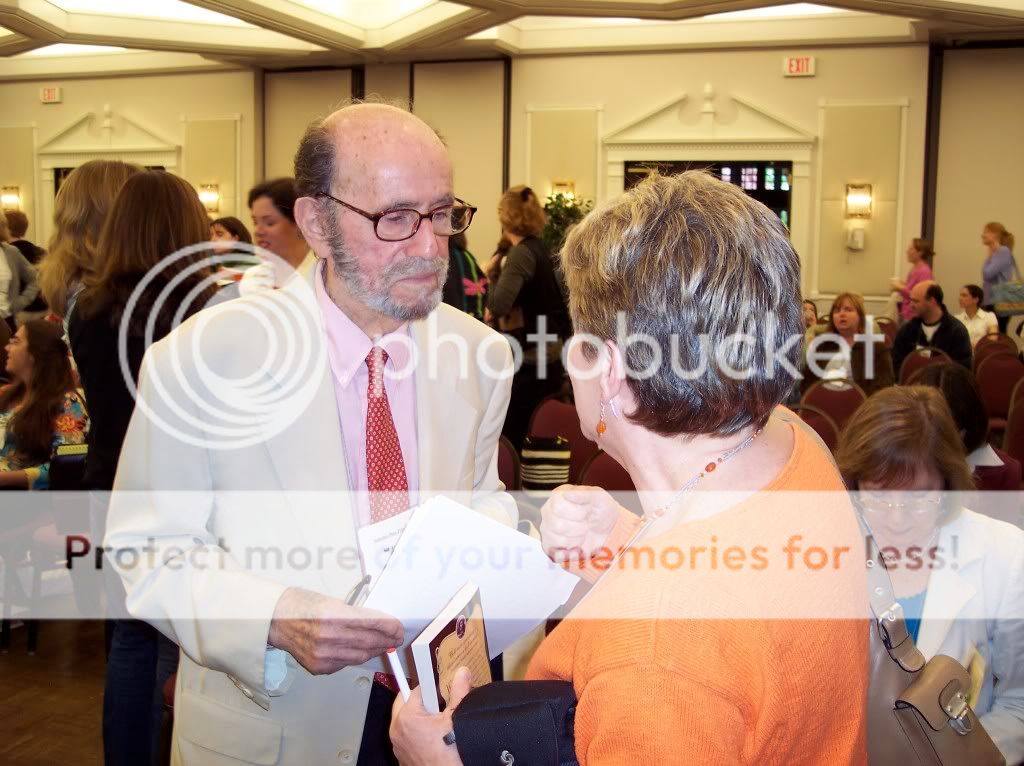

Sid Fleischman, a gifted writer AND magician, worked his magic on us at his Saturday keynote.
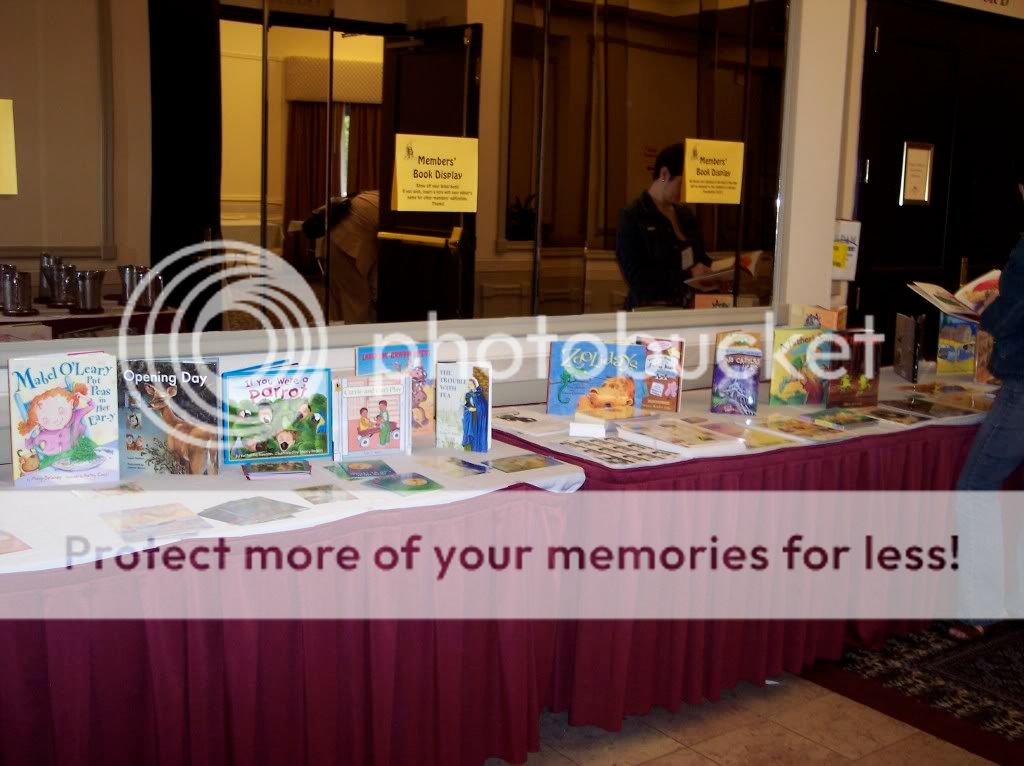

SCBWI members shared their new titles at the Members’ Book Display outside the ballroom.
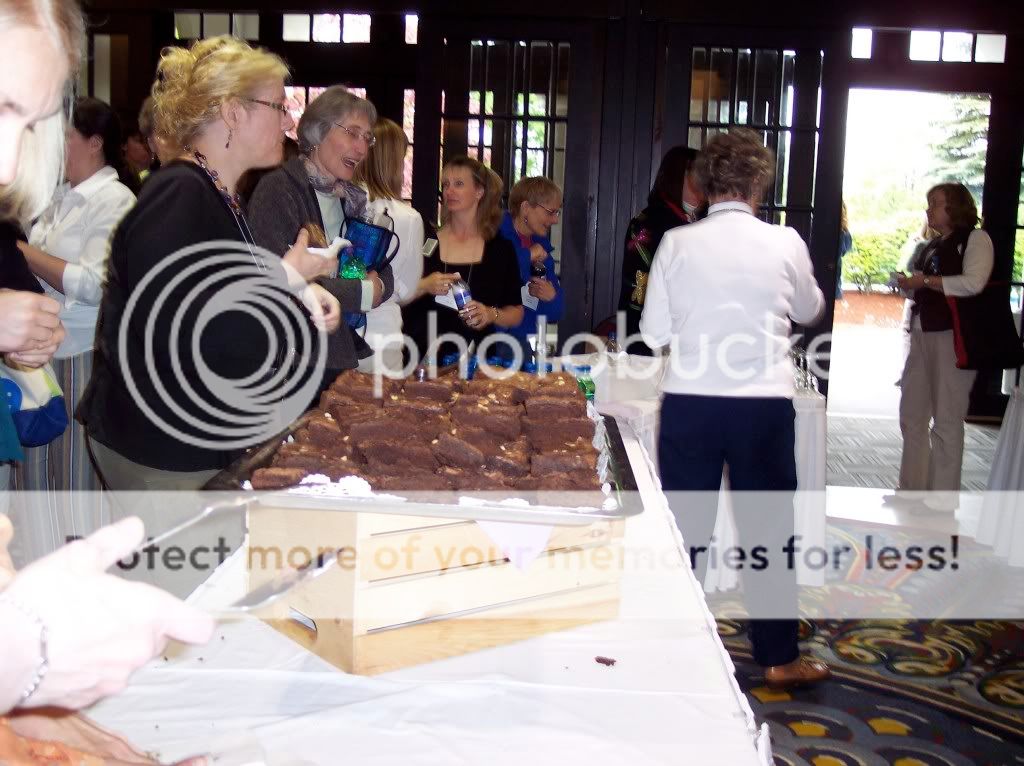

How cool is a conference that sets out a MOUNTAIN of brownies during the break?
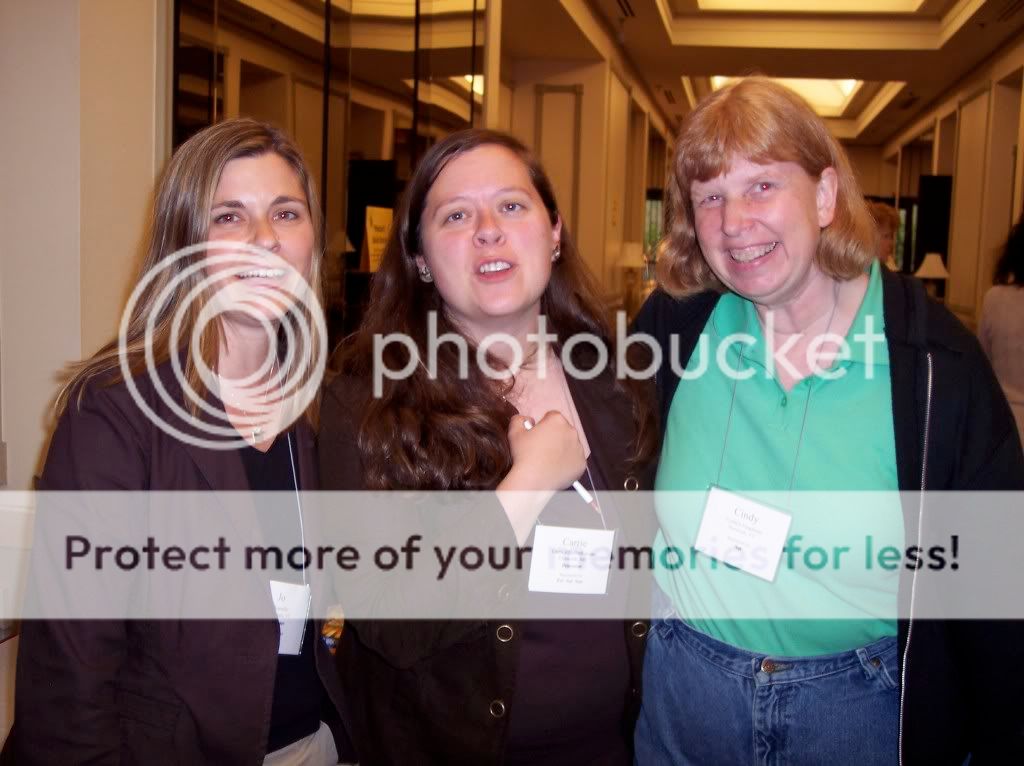

Jo Knowles, Carrie Jones, and Cindy Faughnan take time to catch up during a break.
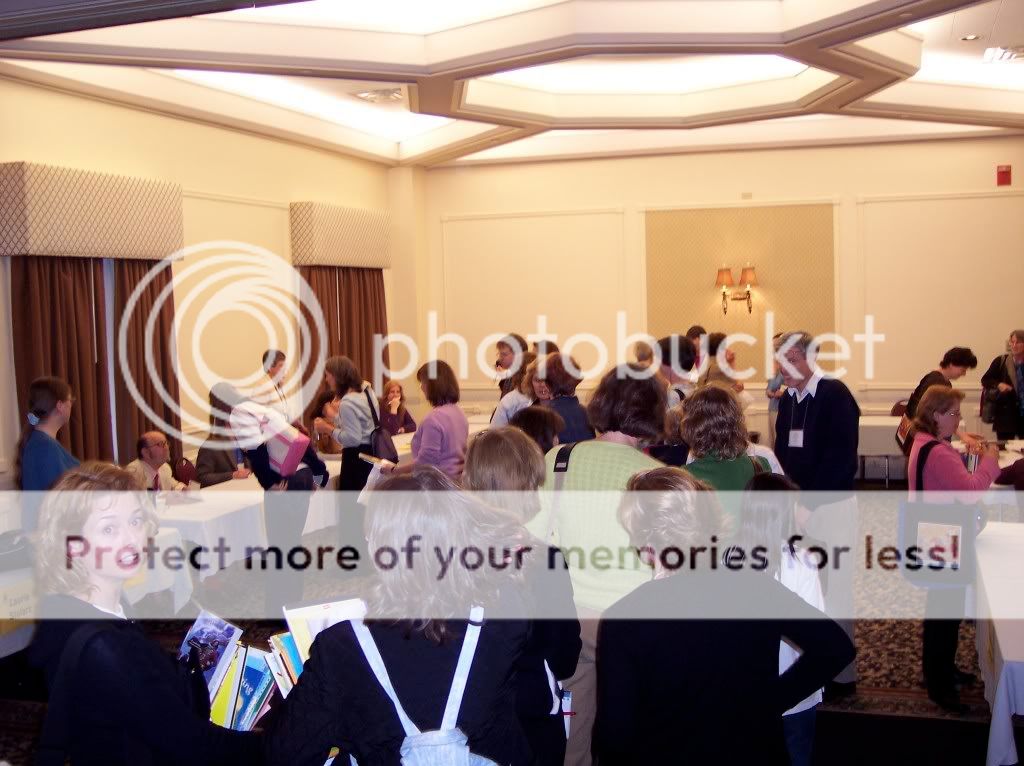

The book signing room was a busy place on Saturday afternoon!
It was AMAZING to meet so many LJ friends in person. Have a great writing week!
New England SCBWI
What a whirlwind! I got home from the New England SCBWI Conference late last night, sleepy but inspired. I’m a huge fan of Letterman’s Top Ten lists, so here are:
10. “A good manuscript will find a home.” Quoted from Stephen Fraser‘s Friday keynote address, this is a great reminder that we don’t need to worry about bells, whistles, or fancy letterhead when sending work to an agent. The writing speaks for itself.
9. Agents ARE looking for a good concept, uncharted territory, strong story, great characters, and an attitude that is professional, confident, and humble.
8. Unless you’re J.K. Rowling, be prepared to market your own book. (More on that in my notes.)
7. Remember that you’re not marketing for the moment. Your marketing should focus on how you want to be known as a writer. Susan Raab of Raab Associates had great advice on how to approach this.
Now the top of the list…the actual writing tips!
6. There are two ways to fail with a children’s book, according to Bruce Coville. (who has a NEW website!)
-Make it so rich and dense it doesn’t get their attention.
-Go right where the kids are and get their attention, but don’t take them anywhere else, to a higher level.
5. If you want to write picture books, read a hundred of them, then choose your ten favorites and copy them by hand. Coville says you’ll learn the rhythm that way and learn how it works.
4. Coville’s recipe for a good story: Take someone you like and get him or her in trouble. Then let your character solve the problem himself or herself at the end.
3. Less is more. Pat Lowery Collins reminded us to eliminate everything that doesn’t move the plot forward or reveal character.
2. When you’re writing backstory, Sarah Aronson suggests two ground rules.
-Think about content. Is it really worth interrupting your story for this?
-Think about length. Keep it short!
1. Children listen to stories. (I’m back to Bruce Coville — one of the most incredible storytellers I’ve ever met.) Stories lead us to have more empathy for one another, and as a result, stories have the potential to save us and heal our world. What better reason to write.
If you weren’t at the conference but would like more, you can read my conference notes. These are by no means a full transcript — just some tidbits that I found useful, or inspirational, or interesting.
- A good manuscript will find a home. Often, when you send out a terrific piece, one editor will “get it,” and that editor will call very quickly.
- When editors ask for a revision before there’s a contract on the table, it only leads to a contract about 50% of the time. However, editors do this out of a sincere desire to make the manuscript better and possibly acquire it.
- Write an “elevator pitch” for your book — a one-minute pitch that you could explain in an elevator ride with an agent or editor.
- Authors need to self-promote. Brett Hartinger is a great example of what can be done.
- What’s selling right now? Funny picture books (under 1000 words), chapter books with strong characters and strong plot (7500-10,000 words), middle grade fiction (especially for girls, 25,000-35,000 words), some historical fiction but not set in the recent past, and strong teen fiction.
- What’s getting old? Trilogies, very edgy YA books, books written in verse.
- Nonfiction is more difficult to sell because kids are turning to the Internet for information.
- Tween literature is growing. Simon & Schuster’s new imprint Aladdin MIX targets this audience.
- When you’re revising, cut anything banal. If it doesn’t move your story forward or reveal character, get rid of it.
- A clear, linear narrative is best. Multi-layered, multi-voiced stories have been done a lot. Don’t let style get in the way of a good story.
- Recommended Books:
- Don’t overwrite your picture books. Leave room for the illustrator.
- Poetry is a tough sell, but it’s out there. It’s good to have an overarching theme that connects the poems in an interesting way.
Susan Raab, Raab Associates – Your Marketing Playbook: Start Early to Get in the Game
- Look at marketing holistically, not just about the moment.
- Think about what you’ll be known for.
- Make yourself contact lists for media, teachers & librarians, booksellers, friends, and industry (publisher, agent, publicist).
- Libraries are asking for more craft ideas & activities that relate to books, games for kids, book club guides, ideas for after-school events, and homework help on websites.
- Try to make your website a destination.
- Consider tying in with a charity. See Berenstain Bears example in the April 19th press release.
- Remember to let your publisher know results of your promotions.
Marketing Questions & Answers Panel with Stephen Fraser, Alexandra Penfold from Simon & Schuster, Yolanda LeRoy from Charlesbridge, and Theresa Howell from Rising Moon & Luna Rising.
- Rising Moon is a small to medium press. Theresa Howell says she’s looking for picture books for ages 4-8 (but no retelling of folktales). Luna Rising is looking for bilingual (English & Spanish) picture books of no more than 800 words.
- Yolanda LeRoy from Charlesbridge is still accepting unsolicited manuscripts and asks that writers offer them as exclusive for three months. After that, they’re free to send elsewhere, even if they haven’t heard back.
- Alexandra Penfold says her imprint is no longer accepting unsolicited manuscripts, but people who heard her speak at the conference are free to submit. She’s looking for funny picture books for young children and middle grade novels.
Sarah Aronson – Back Talk! The Art of Backstory and the Simple but Elegant Flashback
- Sarah suggests examining current YA literature to see how talented authors handle flashback. She read to us from Chris Crutcher’s work as well as from her own book, Head Case, due out this fall.
- Dialogue needs to be convincing if a character is using it to reveal backstory. There needs to be a reason for the character to tell the story to the other characters.
- Check your manuscript for phrases like “I remember” and “I thought back…” Sometimes, they’re necessary, but often, there’s a more elegant way to segue into the past.
- A happy flashback can help to break tension if an edgy YA novel is getting too intense and readers feel too claustrophobic.
- Remember clarity. Be obvious where you are in time (past or present).
Wahoo!!!
The New England SCBWI Conference starts tomorrow! Yay!!
I’ve had so many late writing nights this week that I just fell asleep in the middle of a sentence while I was reading the first Harry Potter aloud to my daughter. (Right at the part where Hagrid shows up at the door of the shack in the storm, too!) I still have to pack clothes, charge my laptop and phone, Mapquest the hotel, and a lot of other things that I wrote down on a list that I seem to have misplaced. Ohhh!
Look for a long post with lots of pictures when I get back!
Cheers to Chris Bohjalian!
Book Club Nirvana!
Our middle school faculty & staff book club choice for May was The Double Bind by Vermont author Chris Bohjalian. He was gracious enough to meet with our group in Burlington tonight to talk about the book and his writing process. Life would be perfect if every time you finished reading an incredible novel, you could sit down with the author and talk with him about his research, revisions, and thoughts while writing the book. (Chris is the literary-looking guy in the middle.)

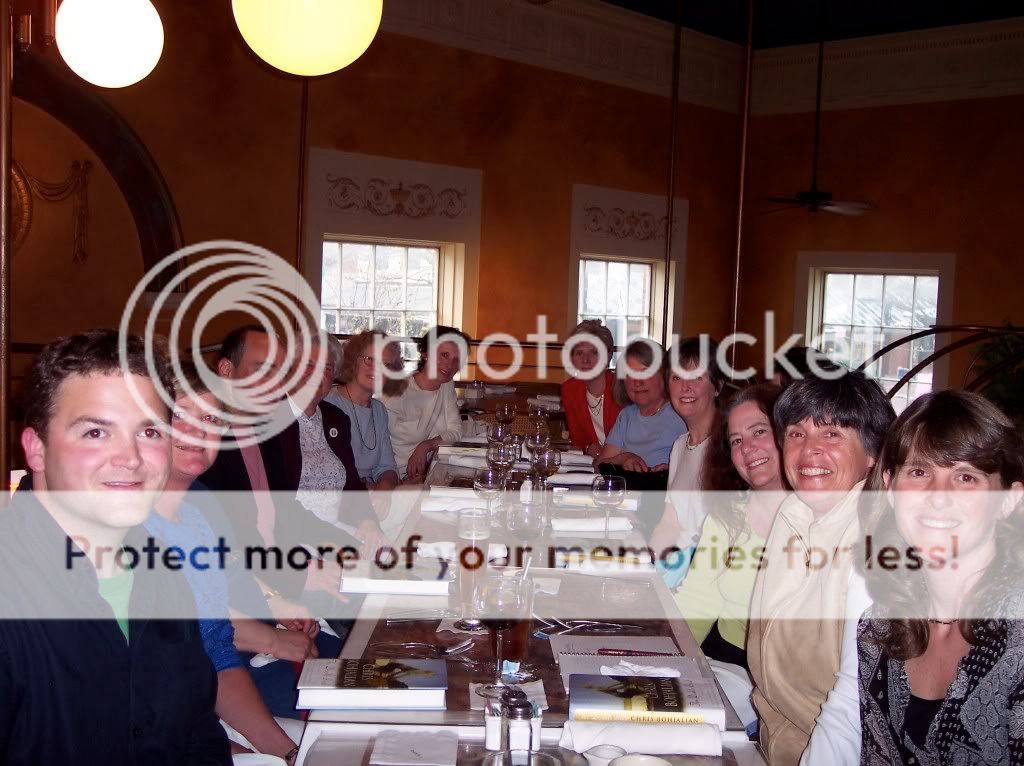

If you haven’t read The Double Bind, it’s a literary psychological thriller — the kind of book where you make prediction after prediction and smile smugly to yourself, only to fall on the floor when you find out the real deal. As soon as I finished reading, I was compelled to look back at about five different parts of the book.
It was fabulous to talk with Chris about our thoughts and connections with his novel — and even greater to hear how this amazing book came to life. Chris told us about the eight drafts and four different points of view that he worked through before putting this book to bed. It was worth every minute of revision.
We’re planning our next field trip — to hear Chris read from his current work-in-progress at the Burlington Book Festival on September 15th. (I’m reading from my middle grades historical novel Spitfire and presenting a families workshop the next day as part of the children’s strand of the festival, and I still can’t quite get over the fact that my name will be on the same program!)
On top of his gift for writing, Chris is one of the most interesting, down-to-earth, and genuine people I’ve ever met. What a terrific night. I’m convinced the world would be a happier, more peaceful place if we’d all sit around and talk about books more often.
Spring hike – new, new, NEW!
Today was a perfect hiking day in the Adirondacks. Nice and cool. No bugs yet. And not too muddy. We climbed Rattlesnake Mountain, in Willsboro — one of our favorites because the summit has a great view of Lake Champlain. The woods are so new right now, full of baby plants and wildflowers that only last a couple weeks. What a gift to have spent time with them today.
I love these tiny fern plants. They remind me of newborn babies — all alien-looking and new.

These pictures just captures the spirit of the Adirondacks — flowers growing on a rock!




We saw these gorgeous dark red Trillium plants all over.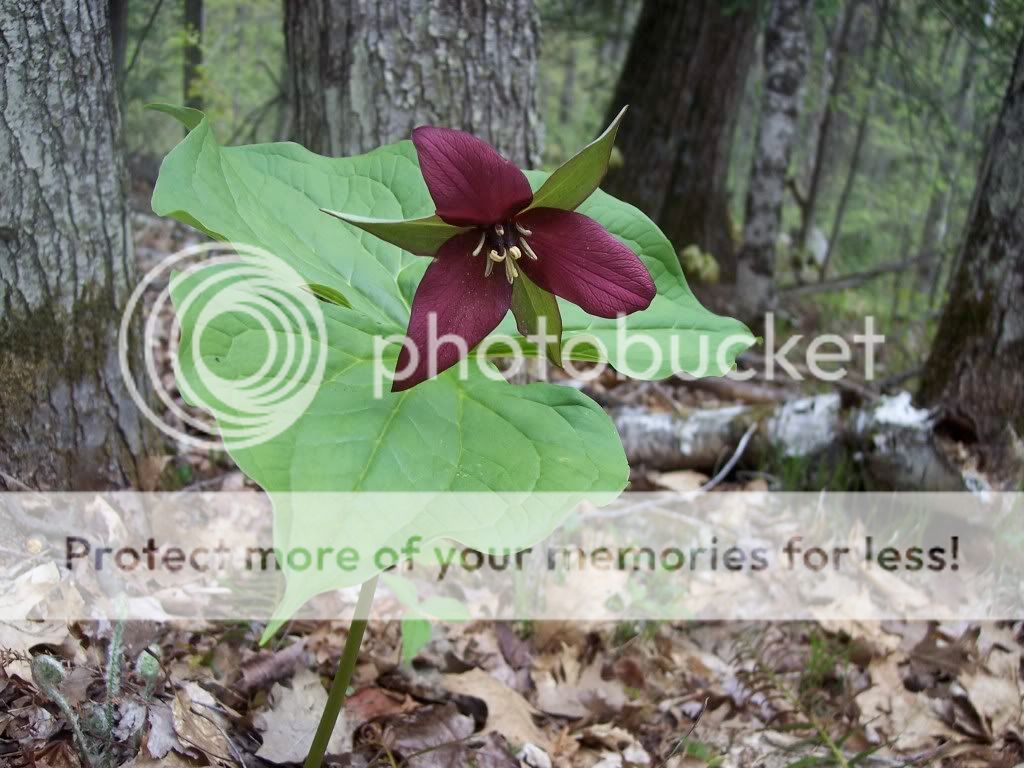

There were a couple other cars at the trailhead, but we ended up having the summit to ourselves.

Check out the colors in these clouds!


On a hike around the summit, we found another rocky clearing where someone had created a garden of rock sculptures. It reminded me of a trip my husband and I took to Vancouver, BC. When we were biking around Stanley Park, we turned a corner and saw an incredible inuksuk (We didn’t know what it was called at the time; we thought it was just a big fancy pile of rocks.) It’s an Inuit tradition used as a directional marker. Sometimes today, we were told, they ‘re built for spiritual reasons, too, to remember and honor people. 

Cool, huh? We added a few stones to these and left them to surprise another group of hikers.
Horn update
Missing horn still missing.
Horns on roof still all gunky.
Babysitter pulled out of the driveway yesterday, stopped, rolled down her car window and and said, “Umm… Are those horns on your roof?” She thought maybe they were some sort of primitive good luck charm.
Horns on the roof


I’m preparing a school presentation for my MG historical novel Spitfire, which is set during the American Revolution. The main character carries her father’s powder horn throughout the story. It’s etched with his drawings and maps and is an important symbol in the book, so I thought, “Hey, wouldn’t it be cool if I made a real powder horn to show kids?” I mentioned this to the life science teacher at my school, who also raises heifers in her spare time. Last week, she showed up at my classroom door with a bag of bloody (and still quite hairy) cow horns that she had just removed from some of “her girls.” (I thought only bulls had horns, but it turns out that’s not true.) She put them in my little refrigerator (“Don’t worry, they’re triple bagged,” she said.) until I could take them home to boil them, which she thought would probably take care of all the gunk still inside.
I boiled them in a big pot on my grill burner for two hours, but the gunk showed no signs of releasing its grip on my horns. Thank God for online reenactor groups, because from their bulletin boards, I learned that boiling was not the answer. I needed to leave the horns outside for several weeks, maybe months, until insects and things ate away the gunk so that I could remove the core (a bit of bone inside the actual horn) and get to work making my powder horn. So I left my four horns outside in my back yard and went in to put the kids to bed.
The next morning, there were only two horns left. I’m terribly worried that one of the older women in my neighborhood is going to have a coronary when she sees her dog chewing something and says, “What’s that you have, Buddy?” only to find a bloody cow horn with sinister looking black hair all around it. But wait – there’s more.


Stay tuned. I’ll let you know how the powder horns are coming along and if the fourth one ever shows up.
Work in Progress Progress!
I’m a huge believer in positive peer pressure, so joining
with the Summer Shape-up was just what I needed to get moving on my current middle grades work in progress. It’s working wonders. I’ve written just over 11,000 words in the past week. What a great idea and a great gift to fellow writers! Thanks!
Working has made me a little less impatient for the release my MG historical novel, Spitfire, this fall. The last time I hated waiting this much was when I was a week overdue for the birth of my daughter. On a happy note, though, Art Cohn from the Lake Champlain Maritime Museum sent me a lovely note about the book’s release. LCMM does an amazing job promoting Lake Champlain heritage and reaches out to school groups with the most lively, innovative museum programs I’ve ever seen. Museum educators there were a huge help when I was researching Spitfire. I’m on my own now with the waiting, though…
View from the back porch
My favorite place to write!



